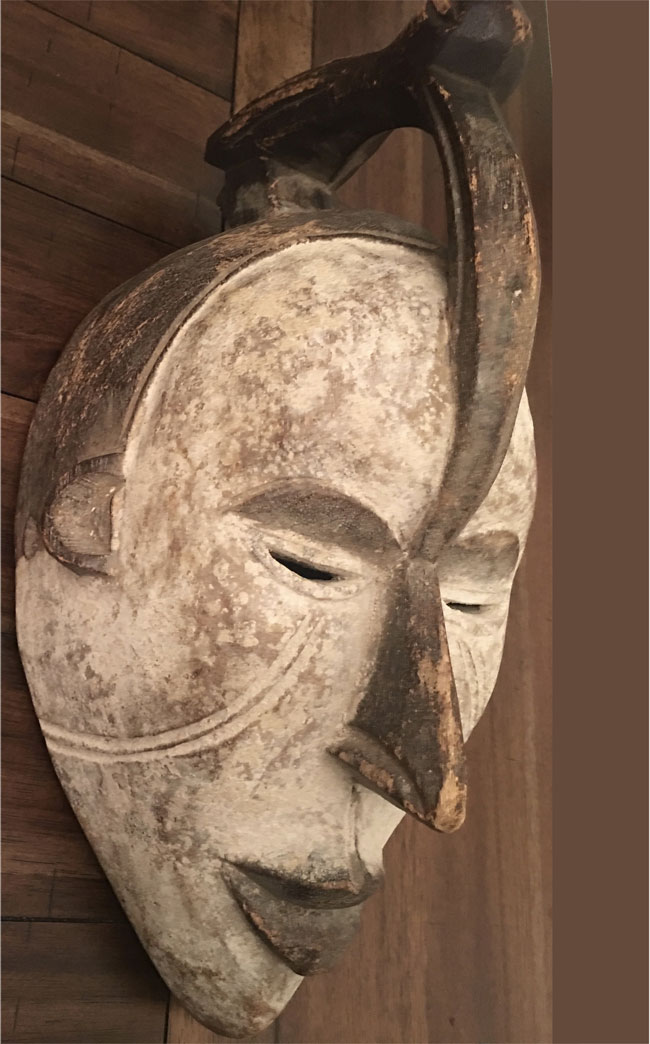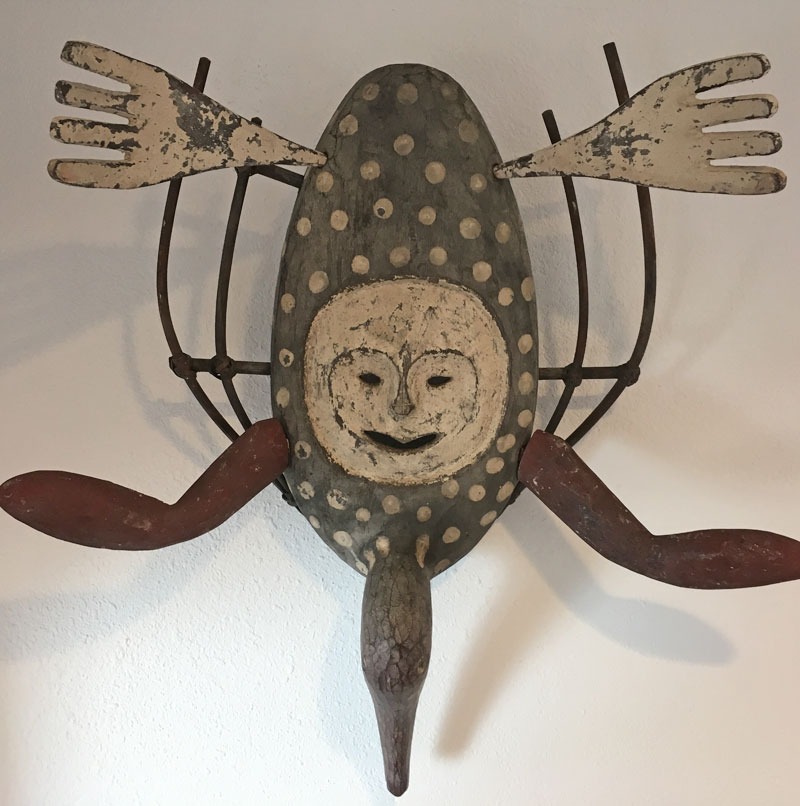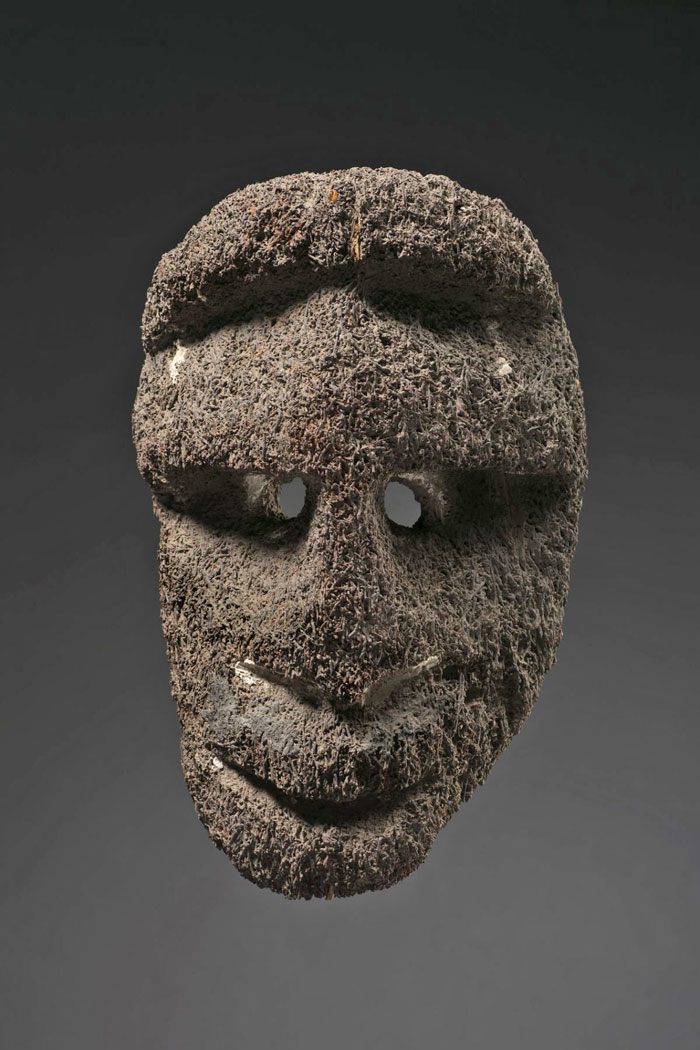 Q: Please help me identify what kind of mask is that and if its authentic or any information you can give me will be highly appreciated. Thank you! Natalya, 1233 Q: Please help me identify what kind of mask is that and if its authentic or any information you can give me will be highly appreciated. Thank you! Natalya, 1233
A: You can easily say this mask is from somewhere in West Africa. It certainly has a nice looking face with a great bird on top, but I can’t tell what tribe made it. The design elements are a mix coming from different cultures in that part of Africa. We see a lot of blended masks these days. This should not surprise– Africans, like us, can easily see masks from other places.
Authenticity means used for celebrations rather than sale to tourists. There’s a slight chance it could be authentic, but the production of masks for sale and export is huge… and much more likely. B |


 Another Eskimo mask from Alaska
Another Eskimo mask from Alaska
 Fern mask from Thomas Murray
Fern mask from Thomas Murray
7 Comments
Natalya
Thank you very much Bob. Inside mask I see some oily spots on the top of mask I would guess that this is part of “authenticity” when mask touched dancing body. Also there are two holes on both sides of this mask and holes aren’t same size which make me think that they wasn’t made with drill or any other electric tool. The white material on mask looks pretty much like kaolin, which they use in Africa, but you can’t say for sure if you won’t take sample of it. I know that they use white for funeral, or dead, instead of black like we do. So white used for better communication with the ancestors and spiritual world. I was able to find similar mask from Cameroon but the colors are a little bit different. Would appreciate any other comments.
Bob Ibold
And thank you for adding some interesting comments. I sure hope one of our readers who is more informed on West African tradition will help us out. I have a good understanding of different masks from all over the world, but I don’t know much about the various cultures.
Eric
A modern replica made in the style of an Idoma mask. The dark spots you see inside are faked to mimic the effects of wear.
Natalya
Thank you Eric, I would like to know how you know that spots are fake inside and how you know that this is replica. I would appreciate explanation not just “its fake’. Thank you
Natalya
Thank you everyone for comments. I just received my appraisal and origination of my mask. Igbo, Nigeria. Mid to late 20th century. Auction value:
$150 – $250, and it was made for sale rather than traditional use.
Thanks everyone.
Eric
Hi Natalya, I can tell from the outside carving of the mask that it is a replica, as it doesn’t closely adhere to the style of the type of mask it is imitating. There are only two pierced holes either side of the rim, which in this type of mask is a clear indicator that it is not authentic. Real Idoma masks would be pierced all around the rim.
Also, the patina on the surface is a chalk and ash wash that is applied then rubbed to mimic age and wear – It’s likely that this piece was made in a Cameroun trade workshop in the last 10-15 years, and the auction value is certainly no more than $50.
Eric
Its not Igbo by the way, it’s Idoma (style).